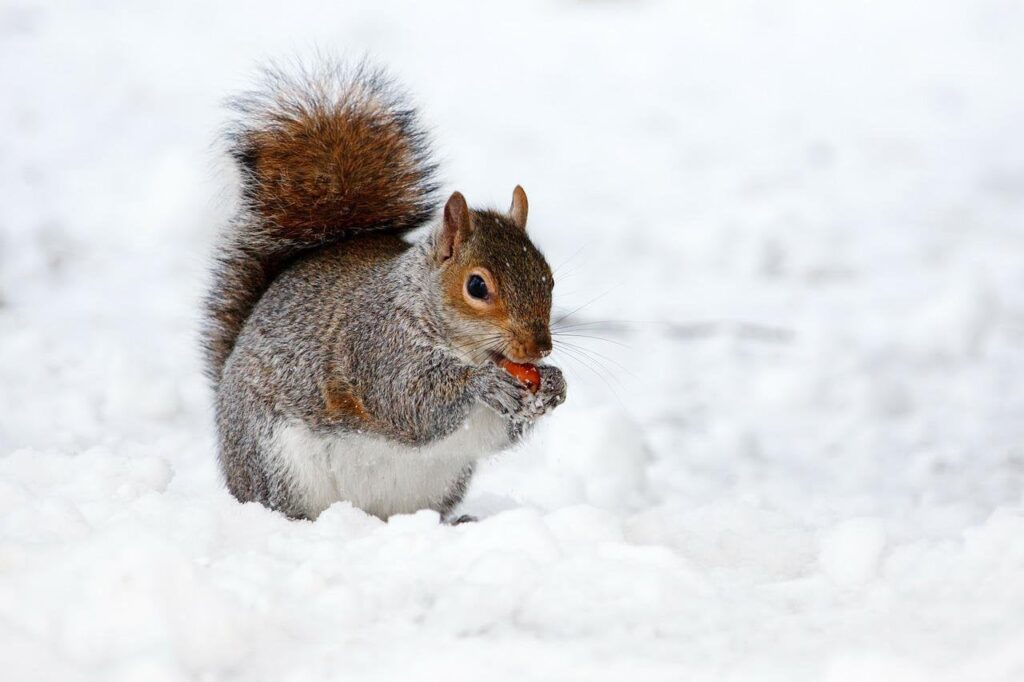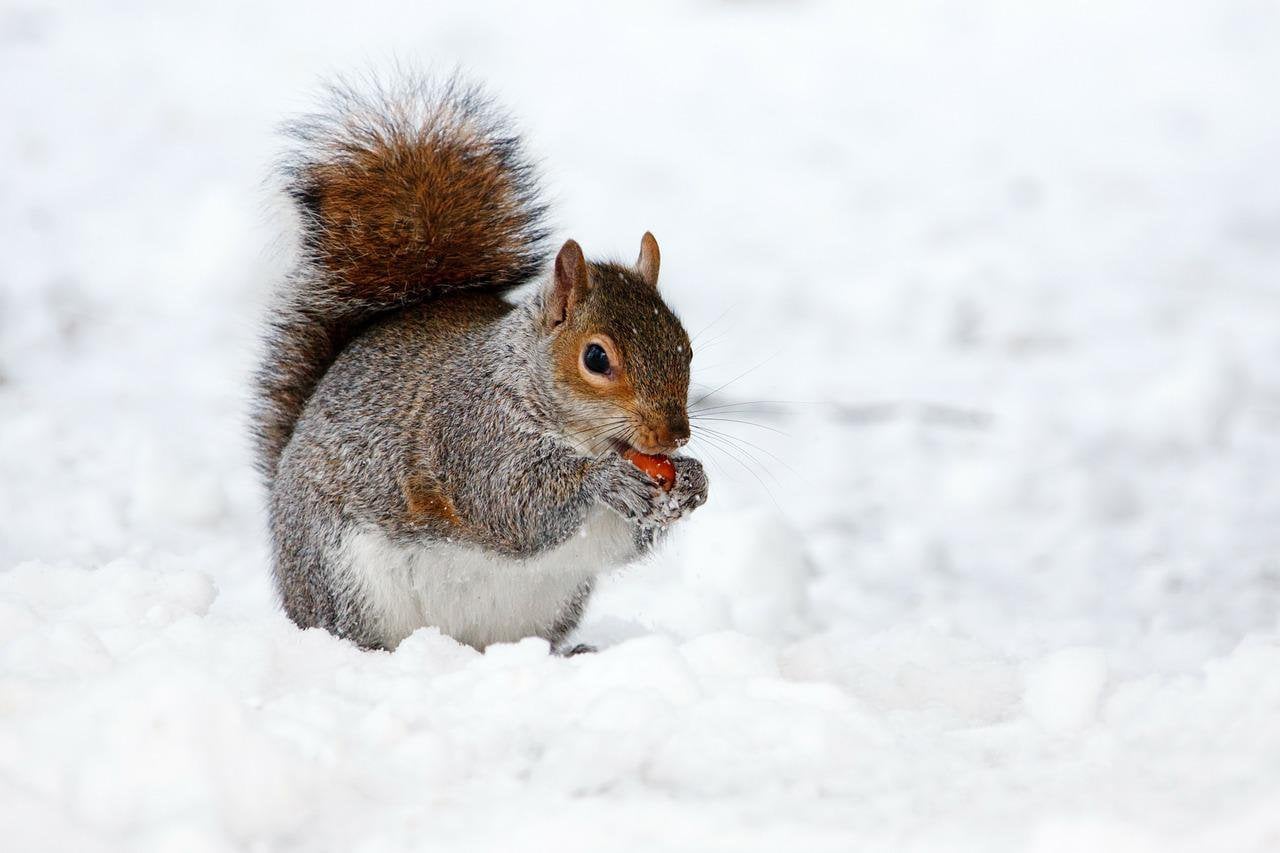
Do Squirrels Forget Where They Hide Their Nuts? The Surprising Truth
The image of a squirrel frantically burying nuts, only to wander off and seemingly forget about their precious stash, is a common one. It fuels the popular belief: do squirrels forget where they hide their nuts? The answer, while not a simple yes or no, reveals fascinating insights into squirrel behavior, spatial memory, and survival strategies. This article will delve into the science behind squirrel nut-hiding, exploring their remarkable memory capabilities and addressing the common misconceptions surrounding their foraging habits.
The Art of Nut Hiding: Scatter Hoarding Explained
Squirrels, particularly species like the gray squirrel and the fox squirrel, are prolific hoarders. They engage in a behavior known as scatter hoarding, a survival strategy where they bury individual nuts or small caches of nuts in numerous locations. This differs from larder hoarding, where animals store all their food in one central location. Scatter hoarding offers several advantages:
- Reduces Theft: Spreading out their food supply minimizes the risk of losing everything to a single predator or competitor.
- Prevents Spoilage: Smaller caches are less likely to spoil before the squirrel can retrieve them.
- Increases Survival: If one area is depleted or becomes inaccessible, the squirrel has alternative food sources.
The sheer number of nuts a single squirrel can bury in a season is astounding. Estimates vary, but some studies suggest a single squirrel can bury thousands of nuts in a single autumn. This leads to the inevitable question: how can they possibly remember all those locations? Considering how many nuts they bury, it seems impossible that squirrels forget where they hide their nuts.
Squirrel Memory: More Than Just a Feeling
While it might seem like a daunting task to recall thousands of burial sites, squirrels possess remarkable spatial memory skills. Scientists have conducted numerous studies to investigate how squirrels navigate their environment and remember the locations of their buried nuts. These studies reveal that squirrels rely on a combination of strategies:
- Spatial Memory: Squirrels have an excellent spatial memory, allowing them to create mental maps of their surroundings. They use landmarks, such as trees, rocks, and bushes, to pinpoint the location of their caches.
- Olfactory Cues: Squirrels also use their sense of smell to locate buried nuts. They can detect the scent of nuts through the soil, even after several months. [See also: Squirrel Senses and Survival]
- Cognitive Mapping: Research suggests that squirrels create a cognitive map of their territory, allowing them to efficiently navigate and remember the relative locations of their caches. This mental map isn’t static; it’s constantly updated as the squirrel explores its environment.
So, while it’s true that squirrels forget where they hide their nuts sometimes, it’s not due to a lack of intelligence or memory. It’s more likely due to the sheer volume of nuts they bury and the challenges of remembering so many locations over time.
Why Some Nuts Are Never Recovered
If squirrels are so good at remembering where they bury their nuts, why are so many nuts left unrecovered? Several factors contribute to this phenomenon:
- Forgetting: Despite their impressive spatial memory, squirrels are not perfect. They may simply forget the exact location of some of their caches, especially if they were buried a long time ago. As time passes and the landscape changes due to weather or human activity, the mental map they created might become outdated.
- Theft: Squirrels are not the only animals that enjoy nuts. Other squirrels, birds, and rodents will often pilfer nuts from caches, especially if they are easily accessible. This competition for resources means that some nuts will inevitably be stolen.
- Germination: Some nuts will germinate and sprout into new trees. This is a natural process and a vital part of forest regeneration. Squirrels, therefore, play an important role in seed dispersal.
- Environmental Changes: Changes in the environment, such as snowfall or flooding, can make it difficult for squirrels to locate their caches. These conditions can obscure landmarks and alter the scent cues that squirrels rely on.
Therefore, the fact that many buried nuts are never recovered doesn’t necessarily mean that squirrels forget where they hide their nuts. It simply reflects the complex interplay of factors that influence their foraging success.
The Impact of Unrecovered Nuts on the Ecosystem
The unrecovered nuts that squirrels bury have a significant impact on the ecosystem. As mentioned earlier, these nuts can germinate and grow into new trees, contributing to forest regeneration and biodiversity. Squirrels, therefore, play a vital role in shaping the landscape. [See also: The Role of Squirrels in Forest Ecosystems]
Furthermore, the act of burying nuts helps to aerate the soil and distribute nutrients. This can improve soil quality and promote plant growth. In essence, squirrels are not just hoarders; they are also important ecosystem engineers.
Debunking the Myth: Do Squirrels Really Forget?
So, let’s return to the original question: do squirrels forget where they hide their nuts? The answer, as we’ve seen, is nuanced. While squirrels undoubtedly have remarkable spatial memory abilities, they are not infallible. They may forget the location of some of their caches due to the sheer volume of nuts they bury, the passage of time, or changes in the environment.
However, it’s important to remember that forgetting is not necessarily a sign of cognitive failure. It’s simply a consequence of the challenges of remembering so many locations over an extended period. Squirrels are highly adaptable and resourceful animals, and their scatter hoarding strategy is a testament to their intelligence and survival skills.
Squirrel Nut Hiding Behavior: A Closer Look
To truly understand whether squirrels forget where they hide their nuts, it’s worth taking a closer look at the specifics of their nut-hiding behavior. Studies have shown that squirrels are not random in their burying habits. They carefully select burial sites based on several factors, including:
- Nut Quality: Squirrels tend to bury higher-quality nuts in more secure locations, suggesting they prioritize these resources.
- Cache Size: They may create larger caches in areas where food is scarce, ensuring a more reliable food supply.
- Competition: Squirrels are aware of the presence of other squirrels and will often bury nuts in areas where they are less likely to be stolen.
This strategic approach to nut hiding suggests that squirrels are not simply burying nuts randomly and hoping for the best. They are actively planning and adapting their behavior to maximize their chances of survival.
The Future of Squirrel Research
Scientists continue to study squirrel behavior and cognition, seeking to better understand their remarkable abilities. Future research may focus on:
- The Neural Mechanisms of Spatial Memory: Investigating the specific brain regions involved in spatial memory and navigation in squirrels.
- The Role of Olfactory Cues: Further exploring the importance of scent in nut retrieval and how squirrels distinguish between different types of nuts.
- The Impact of Climate Change: Examining how climate change may affect squirrel foraging behavior and survival rates.
By continuing to study these fascinating creatures, we can gain valuable insights into the evolution of intelligence and the remarkable adaptations that allow animals to thrive in challenging environments.
Conclusion: Appreciating Squirrel Intelligence
So, the next time you see a squirrel burying a nut, remember that you are witnessing a complex and sophisticated behavior. While it’s true that squirrels forget where they hide their nuts sometimes, their ability to remember thousands of locations is truly remarkable. Their scatter hoarding strategy is a testament to their intelligence, adaptability, and survival skills. By appreciating the cognitive abilities of these often-overlooked creatures, we can gain a deeper understanding of the natural world and the remarkable diversity of life on Earth. Understanding the nuances of whether squirrels forget where they hide their nuts highlights the complexity of animal cognition and the importance of continued research in this field.

